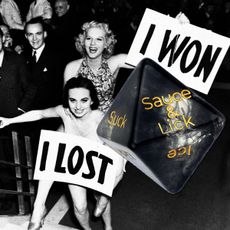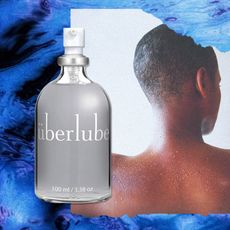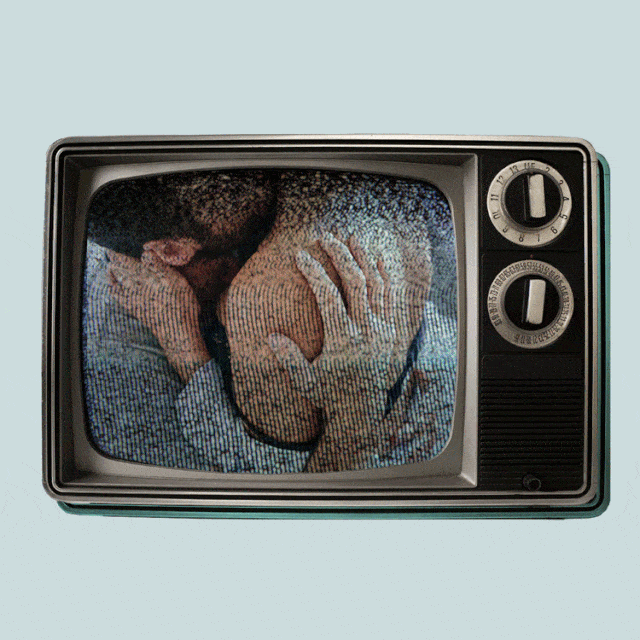
It's in English class that most Americans learn about metaphors — and yet metaphoric language abounds in our daily life. Just think of the word crush: That's a metaphor to describe the overwhelming, crushing sensation we feel when we really, really (no I mean really) like a person. Even email is a metaphor: It's comparing the digital communications that come into our "inbox" on the screen to the envelopes delivered to our homes every day by the postal service.
Thinking of just how many metaphors we use on a daily basis can be pretty fun — if you're slightly geeky like me, anyway. Or if you're slightly geeky like James Geary, the author of a new book called, I is an Other: The Secret Life of Metaphor and How It Shapes the Way We See the World.
In time for Valentine's Day, I asked James to tell us a little about the metaphoric language of love. Here's what he had to say.
What's the most common metaphor for love?
In a word, heat.
Think of "Heat Wave," a song by Martha & The Vandellas that first hit the charts in 1963, whose lyrics have been branded into the minds of millions since:
Whenever he calls my name
Stay In The Know
Marie Claire email subscribers get intel on fashion and beauty trends, hot-off-the-press celebrity news, and more. Sign up here.
Sounds so soft, sweet, and plain
Right then, right there
I feel this burning pain
Has high blood pressure got a hold of me
Or is this the way love's supposed to be?
It's like a heat wave … burning in my heart!
When you think of how many other famous love songs — like "Light My Fire" by The Doors, Bruce Springsteen's "I'm on Fire," and Elvis Presley's "Burning Love" — use the heat metaphor, you'll get a better sense of just how common it is.
But what metaphors for love do we use in daily speech?
Heat is still quite popular when we're talking to each other. Consider everyday expressions like, "He's so hot," and "There was a real spark between us."
What metaphors for love do we find in poetry?
The most famous poetic metaphor for love, which we find in Shakespeare, also involves heat. It's Romeo's line about his inamorata: "Juliet is the sun."
Juliet is definitely not the sun — not literally, at least. Nevertheless, she shines. Romeo is inexorably drawn by her gravitational pull. She is the center of his universe, she radiates heat, and her brightness can burn. We understand Juliet much more vividly than if Shakespeare had taken a more literal approach, such as "What light through yonder window breaks? Oh, it's Juliet, applying her shiny night cream."
But why do we associate love with heat?
Martha Reeves (the lead singer of the Vandellas) hints at the answer when she asks, "Has high blood pressure got a hold of me / Or is this the way love's supposed to be?" Love and other intense emotions, such as anger, raise pulse and blood pressure, increase muscle tension, and stimulate sweat glands, making us feel hotter. Plus, the brain areas that process physical warmth also process psychological warmth, forming a link between body and mind. This link is so strong, in fact, that people who feel emotionally excluded (people who have been given the "cold shoulder") give lower estimates of a room's temperature than people who feel socially included.
The link between heat and love also explains why red is the color of romance. Red is associated with fire, so red lipstick, red dresses, red sports cars, and red hearts for Valentine's Day are all used as metaphorical signals of hot stuff.
Can you tell us about some love metaphors that don't involve temperature?
Loved ones can be missing pieces ("My better half") or burdens ("My ball and chain") or bright spots ("He's the light of my life"). And relationships can be journeys ("Our love is a rollercoaster ride") or physical needs ("I'm starved for affection"). Returning to Martha and the Vandellas's hit, love can also be "quicksand," so that the more you fight it, the deeper in you get.
-
 Olivia Rodrigo Is Bringing Visible Bra Straps Back
Olivia Rodrigo Is Bringing Visible Bra Straps BackThe pop-punk princess wore custom Victoria's Secret at Coachella.
By Julia Gray Published
-
 Meghan Markle’s New Netflix Cookery Show Begins Filming Today—But Not Where You’d Expect It to Be Shot
Meghan Markle’s New Netflix Cookery Show Begins Filming Today—But Not Where You’d Expect It to Be ShotThe Sussexes are having a busy week this week, shooting both of their his-and-her Netflix shows and rolling out the first product offering for Meghan’s new lifestyle brand American Riviera Orchard.
By Rachel Burchfield Published
-
 How I'm Redefining My Wellness Journey in 2024
How I'm Redefining My Wellness Journey in 2024Sponsor Content Created With The Honey Pot
By Aniyah Morinia Published
-
 The 22 Best Vibrators, According to Sex Toy Experts
The 22 Best Vibrators, According to Sex Toy ExpertsThe best options, for every preference and price range.
By Gabrielle Ulubay Last updated
-
 The Best Period Sex Tips, According to Sex Experts
The Best Period Sex Tips, According to Sex ExpertsWho says messy can't be sexy?
By Gabrielle Ulubay Last updated
-
 The 20 Best Sex Games for Couples in 2023
The 20 Best Sex Games for Couples in 2023Who said game nights need to be wholesome?
By Gabrielle Ulubay Last updated
-
 The 14 Best Lubes for Every Need
The 14 Best Lubes for Every NeedGood sex should always go smoothly.
By Gabrielle Ulubay Last updated
-
 COVID Forced My Polyamorous Marriage to Become Monogamous
COVID Forced My Polyamorous Marriage to Become MonogamousFor Melanie LaForce, pandemic-induced social distancing guidelines meant she could no longer see men outside of her marriage. But monogamy didn't just change her relationship with her husband—it changed her relationship with herself.
By Melanie LaForce Published
-
 100 Sex Songs That Won't Make You Cringe
100 Sex Songs That Won't Make You CringeDim the lights and hit play on this sex songs — the perfect playlist of songs to have sex to.
By The Editors Published
-
 75 Real Sex Scenes in Movies
75 Real Sex Scenes in MoviesThese actors aren't faking anything.
By Mehera Bonner Last updated
-
 33 Unexpected Valentine's Day 2023 Date Ideas
33 Unexpected Valentine's Day 2023 Date IdeasA.k.a. not dinner and roses.
By The Editors Published